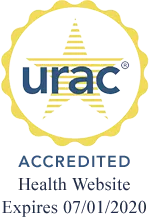New Cure for 4-Hour Erections?
Orphan Drug Stops Priapism, Reverses Penis Damage in Mice
This content has not been reviewed within the past year and may not represent WebMD’s most up-to-date information.
“>From the WebMD Archives
Nov. 4, 2009 — Men suffering penis pain and damage from erections lasting longer than four hours may benefit from an orphan drug used to treat severe “bubble boy” immune deficiency, mouse studies suggest.
The condition, called priapism, seems funny only to those who have never suffered it. More than 40% of men with sickle-cell anemia suffer priapism. It also strikes some men with diabetes and can be a side effect of erectile dysfunction drugs — particularly those injected into the penis. It’s not a joke — it’s a medical emergency.
Swelling from priapism can be exquisitely painful. But that’s not the worst of it. Erections lasting longer than four hours cut off the supply of fresh blood to the penis. The result: Penile fibrosis, the formation of scar tissue in the main body of the penis. This often means permanent erectile dysfunction.
Perhaps not any more. While studying mice missing the gene that malfunctions in kids with severe combined immune deficiency (SCID), Yang Xia, MD, PhD, and colleagues at the University of Texas, Houston, noticed that the mice suffered priapism and penile fibrosis.
Replacing the enzyme made by the gene — adenosine deaminase — not only relieved priapism, but markedly reduced the animals’ penile fibrosis.
“We identified a new application to treat priapism with a drug that is commonly used to treat SCID,” Xia tells WebMD. “When we treated the mice, we do not see any side effects or any abnormality. Actually, the mice look better. We can quickly correct the priapism and prevent and treat penile fibrosis.”
Current treatments for priapism are not optimal, says Harinder Juneja, MD, a University of Texas hematologist who treats many patients with sickle-cell disease.
If drug injections can’t tighten the muscle that controls blood flow to the penis, the excess blood must be withdrawn from the main body of the penis. To do this, doctors may withdraw the blood with a needle or surgically install a shunt to divert blood flow from the penis. Aside from being painful, these treatments often fail to prevent penile fibrosis.
Now Xia and colleagues have found that priapism and penile fibrosis result from excess amounts of adenosine in the blood.
“The discovery of excess adenosine as the causative factor for both prolonged penile erection and penile fibrosis in mice opens up the possibility of treating and even preventing this painful and dangerous disorder,” they conclude.
Juneja says he’s trying to get a clinical trial under way. The good news is that the treatment, PEG-ADA, is already known to be safe in humans. The bad news is that it is very rarely used. As a consequence, it’s an extremely expensive “orphan drug” produced with government assistance.
“This will take a while to get to the stage of a treatment,” Juneja warns.
Xia and colleagues report their findings in the Oct. 26 issue of The FASEB Journal.
Wen, J. The FASEB Journal, Oct. 26, 2009; vol: 24; manuscript received ahead of print.
Yang Xia, MD, PhD, associate professor of biochemistry and molecular biology, University of Texas Medical School at Houston.
Harinder Juneja, MD, professor of internal medicine, University of Texas Medical School at Houston.
Berger, R. International Journal of Impotence Research, 2001; vol 13: pp S39-S43.
further reading
Today on WebMD

Can You Avoid ED?
11 tips to protect your erection.

Get the Facts
How much do you know about ED?

What Causes ED?
Things that can deflate erections.

Treatments for ED
How medications work.
Recommended for You
Low Testosterone: How to Tell
What Is ED?
Life Cycle of a Penis
Embarrassing Male Body Problems
Low Sex Drive: Is Low T to Blame?
How Erections Change as We Age
10 Foods to Boost Men’s Health
Treatments for Erectile Dysfunction
Tools & Resources
Health Solutions
More from WebMD
WebMD Network
For Advertisers
© 2005 – 2018 WebMD LLC. All rights reserved.
WebMD does not provide medical advice, diagnosis or treatment.





